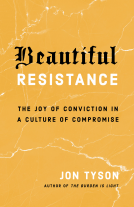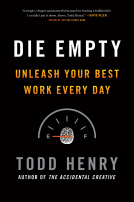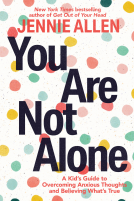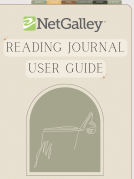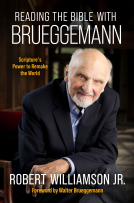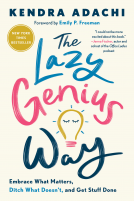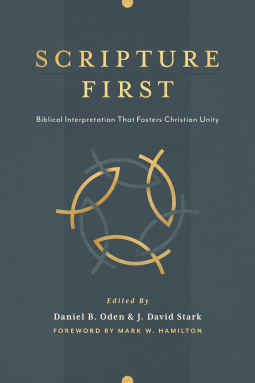
Scripture First
Biblical Interpretation that Fosters Christian Unity
by Daniel B. Oden and J. David Stark
This title was previously available on NetGalley and is now archived.
Send NetGalley books directly to your Kindle or Kindle app
1
To read on a Kindle or Kindle app, please add kindle@netgalley.com as an approved email address to receive files in your Amazon account. Click here for step-by-step instructions.
2
Also find your Kindle email address within your Amazon account, and enter it here.
Pub Date Nov 17 2020 | Archive Date Apr 27 2021
Abilene Christian University Press & Leafwood Publishers | Abilene Christian University Press
Talking about this book? Use #ScriptureFirst #NetGalley. More hashtag tips!
Description
How does Scripture read Scripture, and can the church follow that lead?
Scripture or tradition? The things of God or the things of men? It’s easy, especially in the long shadow of the Reformation, to pit Scripture against tradition as enemies. After all, the goal of orienting one’s faith to the Bible alone can be so alluring.
But the Bible itself suggests there is a fundamental unity between Scripture and the tradition it embodies. Rightly appreciating this unity can set the stage for more faithful and robust engagement with Scripture. Today’s polarized world needs thoughtful Christians who can reasonably consider their faith in light of what the Bible actually says.
Scripture First examines where tradition comes from and how you can avoid trivial proof texting. Discover how the Old and New Testament can serve as a living and active resource for Christian life, and how God continues to leads his people as they engage his Word.
Advance Praise
“Oden and Stark have assembled six powerful essays firmly grounded in Old and New Testament depictions of God’s people striving to understand God’s word. Rather than the divisive patternistic restorationism often used in Churches of Christ, the authors convincingly advocate methods of interpreting Scripture that focus on the core affirmations of Christian faith—especially those proclaimed at and embodied in baptism. The object of godly biblical interpretation is the formation of the church into the image of Christ. These authors provide perhaps the healthiest and most hopeful way forward toward this goal seen today in Churches of Christ.” —Douglas A. Foster, University Scholar in Residence, Abilene Christian University
“These essays spark creative thought regarding how biblical interpretation impacts Christian unity. While focused on those related to the Stone-Campbell movement, the authors’ analyses of texts and methods can benefit those in a much wider circle. A good read for anyone meditating on the concept of a rule of faith and its role in understanding Scripture and building up the body of Christ.” —Susan Bubbers, Dean, The Center for Anglican Theology
“Scripture First calls us to consider what it means to take Scripture seriously. The authors prompt us to avoid blindly accepting or quickly rejecting the Restoration Movement principle of finding unity through adherence to Scripture. This work is challenging and thought-provoking; and, hopefully, it will spark significant conversations within the Stone-Campbell Movement and outside it as well.” —Todd Brenneman, Professor of Christian History, Faulkner University
“The Restoration Movement was birthed from a holy desire to unify divided Christian communities under the authority of sacred Scripture. While some hermeneutical commitments evinced in the movement have proven insufficient for that lofty goal, recent historical and theological work and increasing self-awareness have made possible new interpretive vistas that are critically and faithfully grounded in the achievements of Christian forebears—both Restorationists and others. These essays exhibit the best characteristics of such work. My hope is that Scripture First will be read widely to the edification and gentle provocation of all still committed to sharing in the mysterious work of the Father, reconciling all things in heaven and on earth in the Son through the Holy Spirit.” —Joseph K. Gordon, Associate Professor of Theology, Johnson University
“Scripture First calls for a new kind of patternism. Grounded in a close reading of Scripture, the authors recognize the core affirmations of the faith, promote the historic confession of those affirmations, and call for their expression in both liturgy and communal reading. This project faithfully reads Scripture and offers a path toward a fuller embodiment of the visible unity of the body of Christ. The integration of Scripture, the great tradition of the church, and a living community is, as Thomas Campbell speculated there might be, a ‘better way’ to realize unity in the present.” —John Mark Hicks, Professor of Theology, Lipscomb University
Available Editions
| EDITION | Paperback |
| ISBN | 9781684260911 |
| PRICE | $17.99 (USD) |
Average rating from 6 members
Featured Reviews
Interesting Discussion. This is a collection of six academic essays, mostly seemingly from the same basic starting viewpoint of a particular line of academic thought in a particular realm of a particular Christian denomination. So a reader not necessarily steeped in that exact line of thinking may find this a bit more dense than others, but I actually fit exactly that mold (of not being particularly knowledgeable of the intricacies of this viewpoint), and I found the discussions to be interesting if not particularly illuminating in the ways I had hoped. (For reference, I was approaching this more from being a fan of Frank Viola's Pagan Christianity and as someone who has thought and discussed much within Southern and Independent Baptist circles on the issue at hand - whether Scripture truly is the basis of Christian thought or whether the various traditions have any import whatsoever.) Ultimately this really was an interesting and informative read particularly well suited for anyone with any form of academic interest in Christian theology and practice. Very much recommended.
This is a curated selection of six (6) academic essays from the Stone-Campbell Restoration tradition that tries to re-examine how and why the moment failed to bring about the Christian unity it was looking for. Having grown up within the Disciples of Christ wing of this movement, I came to this book with a certain perspective that colors how I understood the material.
1. Creedal Expressions and Their Development in the Hebrew Bible: One of the tenants of the Restoration movement is that scripture should be read without the "lens" of creeds or traditions which was thought to have contributed to erroneous interpretations. The problem with that approach comes from the fact that "the canon of scripture has come to us through and within community - through the same community that also preserved tradition." In other words, we all use some form of a "lens" to interpret what we read ... and we can find examples of such [proto-creedal concepts] used within scripture itself.
2. Understanding Scripture through the Apostolic Proclamation: I struggled with this material ... as it was way more academic that I was prepared for. The author explores some of the theology of Paul and how he views sin, death and the resurrection. I did pick up a few gems here, but for most of it I was fighting to finish it (and I am sure I didn't understand most of it).
3. Ecclesial Unity, Biblical Interpretation, and the Rule of Faith: Perhaps to must accessible of the six for me, I got quite a bit out of this essay that explored how divisive creeds and tradition could become after centuries of accretions and inculturation. This paper explores how these divisions/schisms exploded in the 16th century and has continued apace since then. In an attempt to restore unity within and between Christian confessions, the American Restoration movement tried to return to traditions found within the "primitive" church and build upon sola scriptura with limited success. Unfortunately, by rejecting the accumulated body of tradition and creeds, the "flattening of Scripture" has the effect of making each element of faith as important as another despite an obvious hierarchy. There is obviously a tension here when defining the correct Rule of Faith to foster a "properly Christian lens" through which to interpret Scripture while maintaining unity.
4. Resisting the Primitivist Temptation: The Restoration movement seeks to return to the "primitive" church; but how far back do you go? And what do you do with all of the competing "primitive" churches that were competing within the early church? Unfortunately, without any reference to creed or tradition, what you eventually get is a "pristine, primitive church remade into the image of the seeker." Perhaps the greatest flaw with primitivism is the narrative that requires a "falling away" from perfect original. The author here counters with an observation that "the truth arrives through time" indicating that our understanding of "main event" took centuries to figure out. This essay is a good follow on from the previous essay and more clearly outlines the problems encountered with this approach.
5. Reading Scripture Baptismally: After a quick review of what baptism is/means, the author then lays out how to use baptism (and the submission to Christ) to interpret scripture by outlining six(6) ways to shift our perspective: pyramid, gospel, Passover, Jordan, fingers and ones ... interesting, but probably not universally efficacious.
6. Beyond Sola Scriptura: An Expanded View of the Textual Inspiration: This essay covers a rough outline of how Protestants have historically used sola scriptura before recommending a way forward using a process more "oriented by communal reflection upon Scripture." The process of discerning meaning through the "experiences of diverse people and the narrative of those experiences" is key; however, in doing so, we must acknowledge something of an iterative approach that is "something akin to a trail-and-error, hit-or-miss strategy."
I was given this free advance reader copy (ARC) ebook at my request and have voluntarily left this review.
#ScriptureFirst #NetGalley
 Rosa S, Educator
Rosa S, Educator
The six contributors advocate an ongoing development of hermeneutics, based on their examination of Protestant approaches since the Reformation. They examine history of how the community of faith has approached, appropriated, and corrected theology and biblical interpretation from the 1500s. They point out that church as ultimate authority - influenced by history and culture - is as unworkable as individual interpretation, sola scripture without the interaction of other believers. They advocate for hermeneutics that consider creeds, baptism, the apostolic emphasis on resurrection, and other core developments in the life of Christ's body, the Church universal as well as new waves of culture and scholarship.
Well worth considering for those interested in the development of hermeneutics and the failure of the American Restoration Movement to include the global and emerging church in its interpretation of scripture.
Readers who liked this book also liked:
We Are Bookish
Biographies & Memoirs, Health, Mind & Body, Nonfiction (Adult)
Robert Williamson Jr.
Christian, Nonfiction (Adult), Religion & Spirituality
